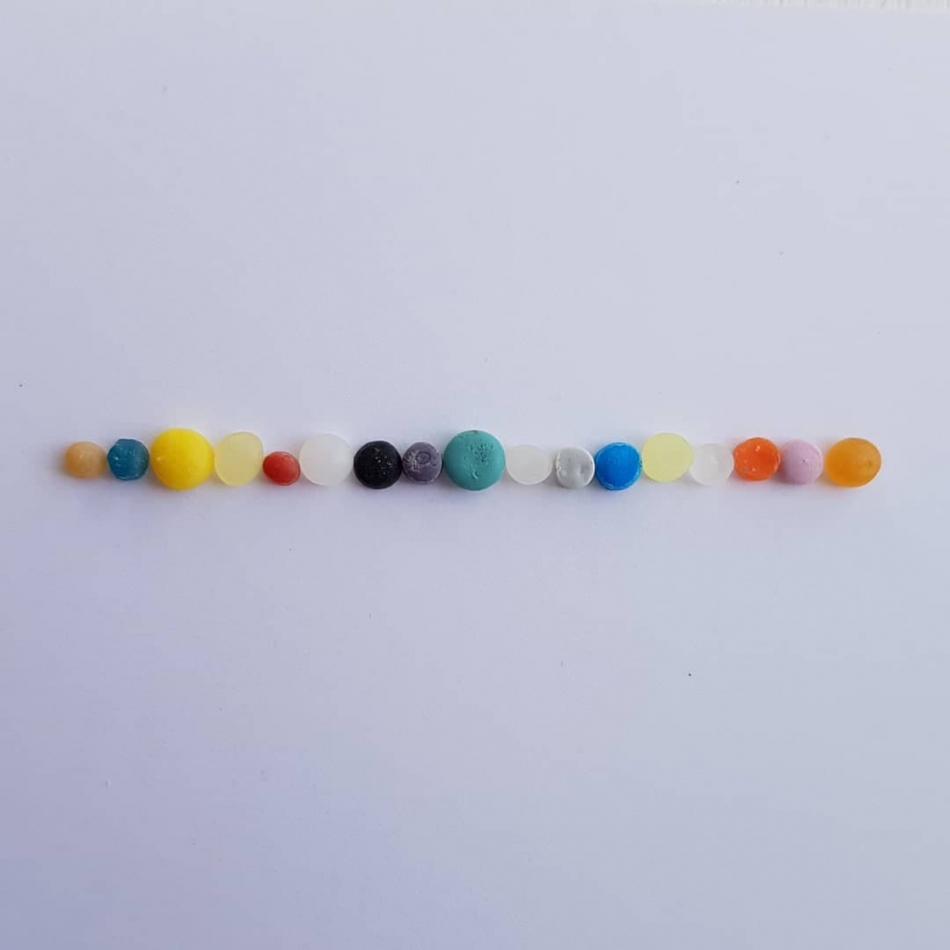Volunteers find plastics pellets (nurdles) on 93% of the beaches surveyed for The Great Technicolour Nurdle Hunt. The event took place across the UK on 13th – 16th April 2018, in total volunteers gave 4545 minutes of their time to nurdling at over 85 nurdle hunts.
The results from the Technicolour Nurdle Hunt show how common nurdles are on UK beaches, with 93% of hunts finding nurdles present and 43% finding over 100 nurdles. The most nurdles found was on a small beach in North Queensferry, Scotland (photo attached), where 450,000 (9.35kg) nurdles were collected which equates to 833 plastic bottles. Volunteers also reported what colours they found. The most common colour found across the hunts is not technically a colour at all. White/clear nurdles were the most common “colour” in 90% of the hunts carried out with black the second and yellow the third most common colours. There was, however, some regional disparity, with black, purple and orange nurdles being more common on the South West Coast of England and blue and yellow nurdles being more common around the Firth of the Forth in Scotland. Alasdair Neilson from Fidra, the environmental charity that runs The Great Nurdle Hunt, stated “it is shocking to see how prevalent nurdles are across the UK coastline. While parts of industry have cleaned up their act, it is clear the status quo cannot solve this issue. For nurdle pollution to be eliminated, responsibility and transparency is needed right across the supply chain.” Douglas Chapman MP for Dunfermline and West Fife who attended the North Queensferry hunt, stated: “Simple best practice measures can mean spills are prevented and cleaned up properly and can stop nurdles entering the marine environment.”
Tracey Williams, nurdle hunter from the group Newquay Beachcombing, stated, “It is impossible to overlook nurdles on many of our beaches here in Cornwall - sometimes the beaches are covered with them. Even beaches that at first glance seem relatively clean often have on closer inspection rows of nurdles and biobeads washed up on them. The more you examine the strandline the more plastic you see”.
To see the full results, click here
